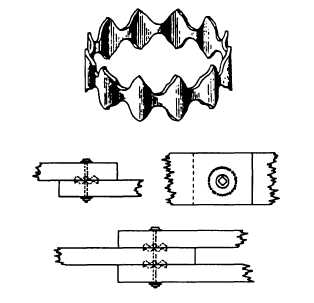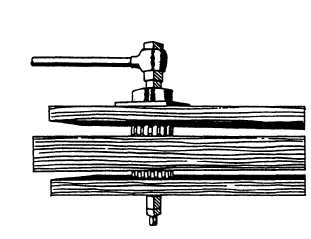Figure 1-29.—Toothed ring and toothed-ring joints.
Figure 1-30.—Embedding toothed rings.
be used for wood-to-wood connections (view C). When
making a wood-to-wood connection, the fabricator first
cuts a depression into the face of each of the wood
members. These depressions are cut to the same depth
as the shear plates. Then a shear plate is set into each of
the depressions so that the back face of the shear plate
is flush with the face of the wood members. Finally, the
wood members are slid into place and bolted together.
Because the faces are flush, the members easily slide
into position, which reduces the labor necessary to make
the connection. Shear plates are available in 2 5/8- and
4-inch diameters.
For special applications, toothed rings and spike
grids are sometimes used. The toothed ring connector
Figure 1-31.—Spike grids and spike-grid joints.
(fig. 1-29) functions in much the same manner as
the split ring but can be embedded without the
necessity of cutting grooves in the members. The
toothed ring is embedded by the pressure provided
from tightening a high-tensile strength bolt, as
shown in figure 1-30. The hole for this bolt is
drilled slightly larger than the bolt diameter so that
the bolt may be extracted after the toothed ring is
embedded. The spike grid is used as shown in
figure 1-31. A spike grid may be flat (for joining
flat surfaces), single-curved (for joining a flat and
a curved surface), or double-curved (for joining
two curved surfaces). A spike grid is embedded in
the same manner as a toothed ring.
STRUCTURAL STEEL
Structural steel is one of the basic materials
commonly used in structures, such as industrial and
commercial buildings, bridges, and piers. It is produced
in a wide range of shapes and grades, which permits
great flexibility in its usage. It is relatively inexpensive
to manufacture and is the strongest and most versatile
material available to the construction industry. This
1-16







